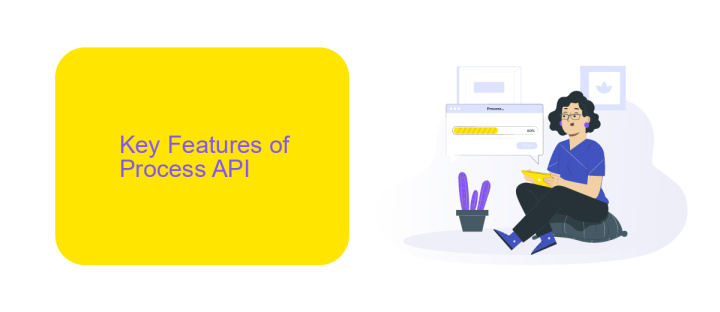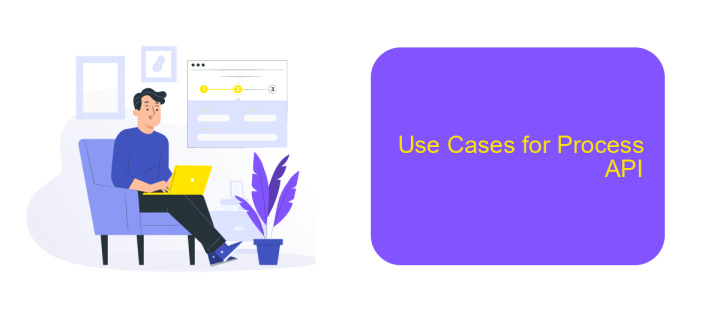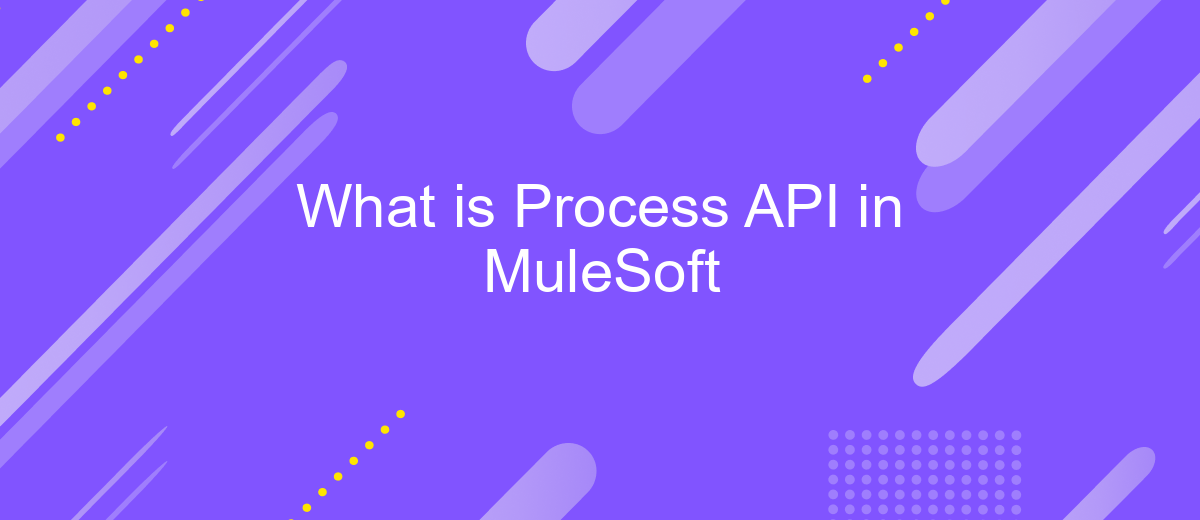What is Process API in MuleSoft
The Process API in MuleSoft is a crucial layer within the API-led connectivity approach, designed to orchestrate and streamline business processes. It acts as an intermediary between System APIs and Experience APIs, enabling seamless integration and data flow across various systems. This article delves into the functionalities, benefits, and implementation strategies of Process APIs in MuleSoft, offering insights for optimizing your integration solutions.
Introduction to Process API
Process API in MuleSoft is a crucial component that facilitates the orchestration and processing of data between various systems. It acts as an intermediary layer that ensures seamless integration and communication within an organization's IT infrastructure. By leveraging Process APIs, businesses can streamline their workflows, enhance data consistency, and improve overall operational efficiency.
- Orchestration of complex business processes
- Data transformation and enrichment
- Seamless integration with existing systems
- Enhanced data consistency and reliability
- Improved operational efficiency
One of the tools that can aid in setting up these integrations is ApiX-Drive. This service simplifies the process of connecting various applications and automating workflows without the need for extensive coding. With ApiX-Drive, organizations can easily configure integrations, ensuring that data flows smoothly across different platforms, thereby optimizing their business processes and reducing manual intervention.
Key Features of Process API

The Process API in MuleSoft offers several key features that streamline and enhance integration processes. One of the standout features is its ability to orchestrate complex business processes by connecting various systems and applications seamlessly. This orchestration is facilitated through a unified platform that allows for the easy configuration and management of data flows. Additionally, the Process API supports real-time data processing, ensuring that information is up-to-date and readily available across all integrated systems. This real-time capability is crucial for businesses that require instant data synchronization and decision-making.
Another significant feature of the Process API is its integration with services like ApiX-Drive, which simplifies the setup of integrations between multiple applications. ApiX-Drive provides a user-friendly interface and pre-built connectors, making it easier for users to link different software solutions without extensive coding knowledge. This integration capability reduces the time and effort needed to establish and maintain connections between various systems, thereby increasing operational efficiency. Furthermore, the Process API ensures robust security measures, safeguarding sensitive data as it moves through different stages of the integration process.
Benefits of Using Process API

Implementing a Process API in MuleSoft offers numerous advantages for businesses looking to streamline their integration workflows and enhance operational efficiency. By leveraging a Process API, organizations can simplify complex integrations and ensure seamless data flow across various systems and applications.
- Improved Efficiency: Process APIs reduce the time and effort required to integrate multiple systems, enabling faster development and deployment of integration solutions.
- Scalability: With a well-designed Process API, businesses can easily scale their integration solutions to accommodate growth and handle increased data volumes without significant rework.
- Enhanced Security: Process APIs provide a secure layer for data exchange, ensuring that sensitive information is protected during transmission between systems.
- Flexibility: Organizations can quickly adapt to changing business requirements by modifying their Process API, which offers greater agility in responding to market demands.
- Cost Savings: By reducing the complexity of integrations and minimizing the need for custom coding, Process APIs can lead to significant cost savings in both development and maintenance.
Services like ApiX-Drive can further enhance the benefits of using Process APIs by offering user-friendly tools for setting up and managing integrations. ApiX-Drive simplifies the process of connecting various applications, ensuring that data flows smoothly and efficiently across all systems involved. This not only boosts productivity but also helps organizations achieve their integration goals with minimal hassle.
Use Cases for Process API

Process APIs in MuleSoft play a crucial role in orchestrating and managing business processes by connecting various systems and services. They allow for the composition of multiple data sources and APIs into a single, cohesive process, enabling seamless data flow and business logic execution.
One of the primary use cases for Process APIs is to streamline complex workflows that involve multiple systems. For instance, in e-commerce, a Process API can manage the entire order fulfillment process by integrating inventory management, payment processing, and shipping services.
- Automating customer onboarding processes by integrating CRM, ERP, and marketing automation platforms.
- Synchronizing data between disparate systems like HR, finance, and payroll for unified reporting.
- Managing supply chain processes by orchestrating data flows between suppliers, manufacturers, and distributors.
- Enhancing customer support by integrating ticketing systems, knowledge bases, and communication platforms.
By leveraging services like ApiX-Drive, businesses can further simplify the integration process. ApiX-Drive offers tools to connect various applications without requiring extensive coding, thus accelerating the implementation of Process APIs in MuleSoft. This ensures that businesses can quickly adapt to changing needs and maintain efficient operations.
Implementing Process API in MuleSoft
Implementing a Process API in MuleSoft involves designing and deploying APIs that orchestrate data and services across systems. Begin by defining the API specifications using RAML or OAS within Anypoint Platform. This ensures that all endpoints, methods, and data models are clearly outlined. Next, utilize MuleSoft's Anypoint Studio to create flows that integrate multiple systems, applying data transformation and business logic as needed. Deploy the API to CloudHub or an on-premise server, ensuring it is secure and scalable.
For seamless integration, consider using services like ApiX-Drive, which simplifies the connection between various applications without the need for extensive coding. ApiX-Drive offers pre-built connectors and an intuitive interface, making it easier to link your Process API with external systems. This approach not only accelerates the development process but also enhances the reliability and maintainability of your integrations. By leveraging such tools, you can ensure that your Process API is robust, efficient, and capable of meeting evolving business needs.
- Automate the work of an online store or landing
- Empower through integration
- Don't spend money on programmers and integrators
- Save time by automating routine tasks
FAQ
What is a Process API in MuleSoft?
How does a Process API differ from System and Experience APIs in MuleSoft?
Why are Process APIs important in an API-led connectivity approach?
Can Process APIs be used to automate workflows?
What tools can assist in designing and implementing Process APIs?
Apix-Drive is a universal tool that will quickly streamline any workflow, freeing you from routine and possible financial losses. Try ApiX-Drive in action and see how useful it is for you personally. In the meantime, when you are setting up connections between systems, think about where you are investing your free time, because now you will have much more of it.


